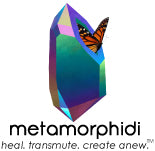What You Should Know About Crystals: The Basics
Crystals possess unique properties that have fascinated mankind for thousands of years. Crystalline beauty is also undeniable, and it's not hard to see why. This post discusses the basics about crystals that you should know, including how they form, their benefits, and what the Mohs Scale is.
What Are Crystals?
Crystals are naturally occurring formations of matter made up of one or more lattice structures. As polyatomic solids, the structure of crystals comprises multiple atoms stuck together. The method and pattern of arrangement of these atoms make crystals unique.
How Do Crystals Form?
The naturally occurring crystals form when nature turns the chemical bonds in the atoms into a crystal. Unlike other polyatomic solids such as metals and glasses, crystals cannot be created in a laboratory. They're formed in nature by some form of external stimulus that changes the chemical bonds of atoms. The atoms may get closer together or move apart. This external stimulus can range from extreme heat or cold, such as in volcanic eruptions, or intense pressure, such as in a meteorite. When crystals form in nature, the chemical bonds break down, and the atoms form a different structure. In the process, they lose energy and settle into an organized, stable state.
Types of Crystals
Crystals all fall into one of three categories based on their formation and, therefore, structure: organic, inorganic, and complex. Let's take a closer look at each.
Organic crystals are composed of carbon. These crystals are usually translucent with shades of pink, yellow, or orange. They form in nature under extreme conditions.
Inorganic crystals are made from elements other than carbon. Such crystals are usually transparent, such as quartz.
Complex crystals comprise of multiple elements. The arrangements of these elements in the crystals give it a complex structure, hence the name.
The different shapes and colors of crystals
Crystals come in all shapes and colors. The crystal shapes are based on their atomic structures, which also defines their classification. The elements present during the formation of a crystal will determine its color.
Uses and Benefits of Crystals
Crystals are used in health, beauty, and wellness products as well as in crystal healing. They're also used in jewelry, décor, and other forms of adornment.
The benefits of crystals range from physical to psychological. To begin with, crystals have an energy source. This property helps to balance your energy. Crystals also have healing properties, which contribute to their popularity. Further, the mild and calming crystal energy can help reduce stress and improve concentration. They're also helpful for reducing anxiety and insomnia.
What is the Mohs Scale?
The Mohs Scale is a tool used to describe the hardness of different minerals. The harder a mineral is, the lower number of scratches it can withstand before getting broken.
The Mohs Scale is composed of 10 levels, with 1 being the softest and 10 being the hardest. Most crystals have high scores on the Mohs Scale and are not easy to scratch.
As a check for authenticity, if a piece of gemstone easily scratches compared to glass, it is probably a fake.
Conclusion
Crystals have existed on Earth for millions of years. They form under extreme conditions, and their uses range from balancing your energy to healing the body and bringing peace and tranquility into your life.
Shop a variety of healing crystals and crystal items from the Metamorphidi store.






